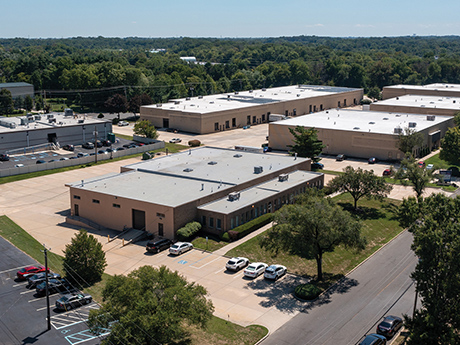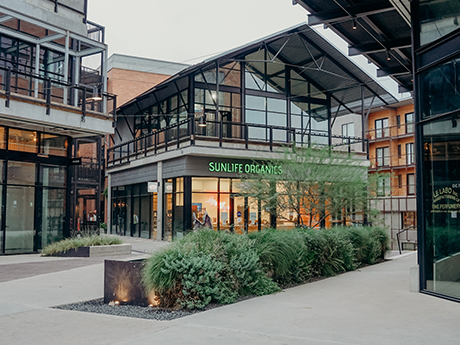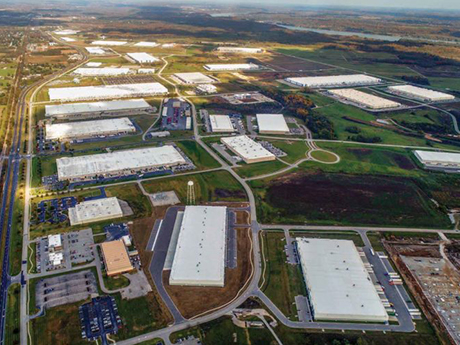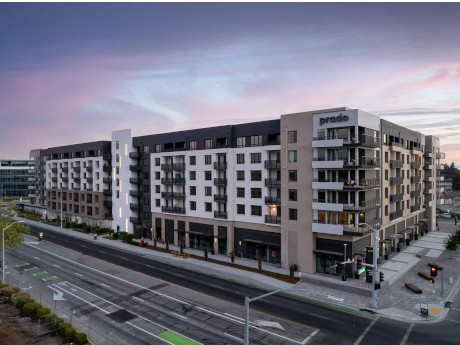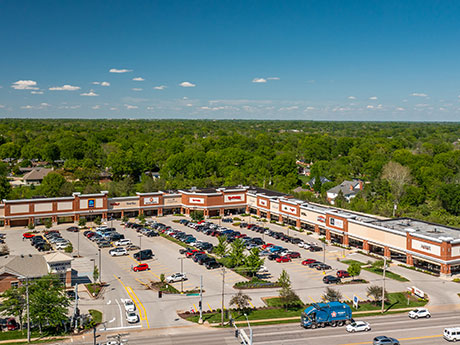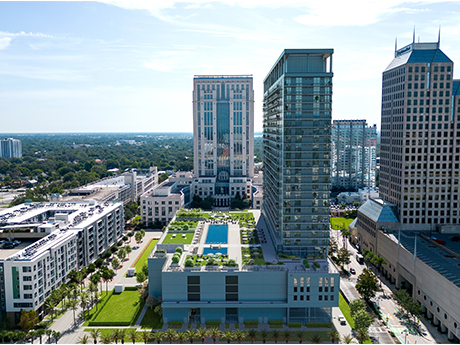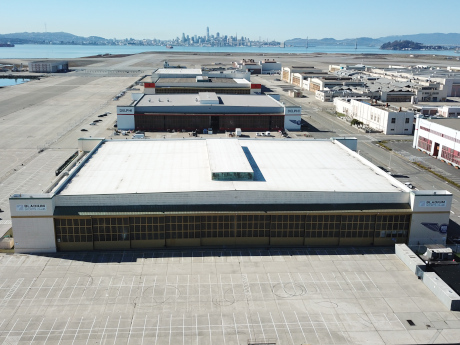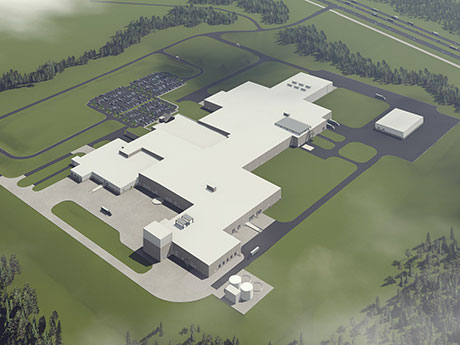— By Dustin Dolby, executive vice president, Colliers — During the second quarter of 2024, the San Francisco multifamily market endured high interest rates and delayed cuts. Between June and December of 2023, expectations of the Federal Reserve cutting rates spurred an increase in transactional activity following an apparent lull in the first quarter of 2023 as interest rates remained elevated. This two-peat of complacent transactions can be attributed to the looming decision concerning interest rate trajectories and its projections. Upon reaching the second quarter of 2024, we have yet to see any such cuts applied. This — along with the Federal Reserve’s consistent reluctance to cut — has resulted in a plateau of transactional volume within the San Francisco multifamily market. Development within the San Francisco submarket has faced similar stagnation. However, this can be attributed to a lengthy “shot clock” that new developments face regarding the city approval process. Because of this, projects that focus on a large percentage of affordable units have been streamlined and comprise the bulk of new developments in the market. If the Federal Reserve lowers interest rates by the end of the third or fourth quarter of this year — as anticipated in its …
Market Reports
By Taylor Williams From an investment perspective, the New Jersey industrial market has plenty going for it: residential density throughout, proximity to major ports, high barriers to new development — but not even those fundamentals could shield the sector from macroeconomic variables that have caused deal volume and velocity to drop in recent years. Given the benefit of hindsight, the decline in industrial investment sales activity between late 2022 and early 2024 is not really surprising. Like most major industrial markets, those of both Northern and Southern New Jersey saw explosive demand for space in the early months of the pandemic as Americans sheltered in place and did their shopping online. Rents soared to record highs; cap rates compressed to historic lows. Institutional capital planted its flag in the Class A trophy space, and investors of all types duked it out for everything else. It was a hell of a party, but it couldn’t last. And when the lights began to come back on in the form of rising interest rates, sellers that didn’t have to sell generally chose not to. “Cap rates leveled off with the pricing discovery that went on when interest rates started rising,” explains Marc Isdaner, …
By Burdette Huffman, executive vice president, Blue Ox Group Why are people drawn to spend money and time at certain places in a city? What makes someone want to do their shopping, stop for coffee or plan a date night at one spot versus another? Sometimes, it’s a special location or an emotional connection to a particular vendor. But in many instances, the draw is entirely by design. It’s an intentional, strategic urban planning tactic that’s been around for decades, and it’s called placemaking. What Is Placemaking?The concept of placemaking has been around since the 1960s thanks to urban planning pioneers and was bolstered in the 1990s by the smart growth agenda of organizations like the Urban Land Institute. In modern parlance across the state, it’s not much different. Put simply, placemaking is about creating a special place where people want to be. Placemaking is about imagining and then developing a place where parents might want to grab coffee after dropping their kids off at school. Or it’s a place where date nights happen because there’s a great new spot for dinner and maybe space to take a walk or grab a drink afterward. If it’s executed correctly, it’s the …
Louisville’s Industrial Market Is Entering ‘Slow-Paced Cooldown’ Period of Market Cycle
by John Nelson
The Louisville industrial market has simmered at a slow and steady pace during 2024. Continued uncertainty with debt markets, inflation and the upcoming elections have placed developers on the sidelines, and occupiers in a holding pattern. Despite how the market feels today, Louisville remains poised for a comeback. A brief overview shows how and why the Louisville market is in the position it is today, and what to expect beyond 2024. The past five years reveal a compelling story, one that developers, occupiers and investors alike have come to understand as they seek to develop, lease or own real estate in the Derby City. Driving much of this development and occupier activity in Louisville is the presence of the UPS Worldport, two Ford manufacturing plants, Haier’s GE Appliance Park and other manufacturers that keep suppliers, third-party logistics firms and e-commerce companies jockeying for space. Louisville’s central location on the I-65 corridor and proximity to two-thirds of the U.S. population are also key reasons the market continues to grow as a hub for logistics, e-commerce and manufacturing. The market saw tremendous growth over the past five years, assisted by the space grab during COVID. Since 2019 bulk inventory experienced growth of …
— By Rachel Ivers, senior analyst, multifamily investment sales team, and Bryan Danforth and Matt Thomson, senior vice presidents, Compass Commercial — The multifamily investment sales market in the San Francisco Bay Area is undergoing a noticeable transformation that’s driven by economic pressures and evolving investor strategies. Unlike in previous years — where sellers might list properties to capitalize on market highs or interest rate lows — the current environment is seeing fewer sales motivated by profit. Many sellers today are cashing out due to expiring fixed interest rates or selling for personal reasons rather than purely financial motivations. This includes circumstances such as inheritance, divorce or retirement. With the Baby Boomer generation, currently aged 60 to 78 and reaching retirement age in larger numbers, we’re beginning to see the front end of significant changes in property ownership. This demographic shift is likely to drive a substantial increase in inheritance sales in the near future as life expectancy hovers around 77.5 years. A significant factor driving this shift is the belief among many investors that the market has peaked. Concerns about stricter rent control measures, which continue to appear on ballots, are prompting these investors to seek opportunities elsewhere. Markets …
By Grant Mechlin, Sansone Group The St. Louis retail market showed impressive resilience in the second quarter of 2024, thanks to strong consumer spending and growing demand across various sectors. Despite challenges such as higher borrowing costs and persistent inflation, the market tightened considerably, with availability dropping to a record low 4.8 percent and well below the five-year average, according to CoStar. This strong absorption has persisted for nine consecutive quarters, highlighting the market’s ongoing strength. A major factor behind this is the limited new supply — only 770,000 square feet of retail space was added in the past year, with nearly all of it quickly absorbed, according to CoStar. This scarcity has fueled development, especially in areas like quick-service restaurants, banks and discount retailers, as tenants are forced to explore new construction as the only viable option to combat a lack of supply in the market. Meanwhile, the overall prices of goods and services in the St. Louis area saw a 3.4 percent rise over the past year, according to the Consumer Price Index. While food costs came down slightly, there was a 5.4 percent increase in energy costs and 4.3 percent for all other consumer expenditures. Despite …
By Taylor Williams DALLAS — It’s an exceptionally challenging time to be developing retail space in the metroplex. Pick your poison: Interest rates that have tripled in two years, restricted proceeds from lenders, longer entitlement and permitting times, limited land for new projects. Between all these barriers to growth, the deck is seemingly stacked against brick-and-mortar retail developers these days, despite the fact that in Dallas-Fort Worth (DFW), occupancy is very high and population growth shows little sign of slowing. Of course, each of those factors is exacerbated with large-scale developments. More land and rentable square footage require the raising of more debt and equity, which translates to heftier interest and dividend payments, respectively. If the site is an assemblage, then predevelopment is more time-consuming, and with the push outward to new suburban paths of growth, those sites may not already be zoned for retail. If rents aren’t trending upward, those factors alone can kill a project in its infancy. Editor’s note: InterFace Conference Group, a division of France Media Inc., produces networking and educational conferences for commercial real estate executives. To sign up for email announcements about specific events, visit www.interfaceconferencegroup.com/subscribe. For all these reasons, some owner-operators see opportunity in building smaller …
Orlando’s multifamily market has experienced softened conditions lately due to a record amount of new supply being built, as well as economic challenges impacting commercial real estate as a whole. Yet, green shoots have emerged as insurance costs continue to ease and interest rates remain steady with downward pressure. Both overall sentiment and renter demand have steadily improved as well. Properties in the multifamily space seeing the most interest these days are those that are high-quality and well-located. Two key multifamily sale transactions that occurred in the second quarter of 2024 were in the Southwest Orlando submarket. This includes the 424-unit Osprey Links at Hunter’s Creek property that sold for $100.6 million, which marked Orlando’s largest multifamily sale this year, and the 296-unit Sonceto Apartments property that sold for $71 million. Investors are flooding back into the market with increasingly more aggressive offers and heightened competition as a result of the still limited available multifamily inventory and notion that supply levels have peaked. However, additional supply will still enter the market in the years to come as developers maintain a positive outlook on Orlando with just over 2,000 units across six buildings delivered by the end of the second quarter …
— By David Nelson, regional president of brokerage for Northern California and Nevada, Kidder Mathews — After record figures across most U.S. industrial markets in 2021 and 2022, key fundamentals cooled in 2023 and have been recalibrating ever since. Total net absorption has been negative in recent quarters, sublease space is on the rise, vacancy and availability rates have been steadily inching up, and average asking lease rates are relatively flat. Furthermore, the recent surge in development activity due to the rise in ecommerce penetration has been slowly drying up with construction starts dropping by more than 60 percent in 2023 and 2024. Core industrial markets in the Bay Area experienced notable increases in both vacancy and availability. Silicon Valley vacancy rose from between 1.5 percent and 2.5 percent last year to 3 percent and 4 percent in 2024. Meanwhile, East Bay rose from 3.5 percent and 4 percent in 2023 to 5.5 percent and 6.5 percent in second-quarter 2024. During the first half of the year, an increase in sublease space has been a major contributor to the higher rates. They have increased from the pre-COVID average of 9 percent of total available space to 19 percent at the end …
By Mary Lamie, Bi-State Development, St. Louis Regional Freightway The St. Louis regional industrial market continues to be a magnet for investment, with significant capital investment dollars flowing into four target industry sectors that remain key drivers of the bi-state economy. These sectors include metals, advanced manufacturing, food and AgTech, and chemicals. They are legacy industry sectors poised for continued innovation, job creation and economic diversification, in part due to the region’s exceptional logistics and transportation assets and established talent pipelines. Metals The St. Louis metropolitan area ranks second in the United States for mineral and ore exports. With more than $2.9 billion exported in 2022, the figures prove the market is well established for metals manufacturing, processing and shipping. The metals market is expected to grow with nearly 17,000 metals industry workers already in the region, and with copper supplier Wieland making a $500 million investment at its East Alton, Illinois, facility — a move that will retain 800 jobs in the region. “Wieland is committed to a sustainable future and is taking significant steps to modernize its East Alton facility,” says Greg Keown, president of Wieland Rolled Products North America. “This effort solidifies our ability to supply the …


